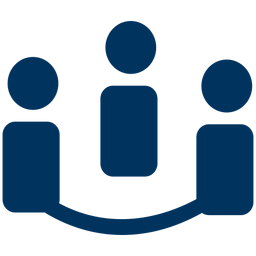Need Help Getting Online?
Link to this section
SFUSD has learned that the emergency funding that provided students with hotspots during the pandemic has dried up and will not be renewed. The District is currently reviewing its options. While every effort will be made to continue to provide hotspots for students identified as having the greatest needs, hotspots for many students will be turned off sometime this school year, and those hotspots will need to be collected by their school sites.
Meanwhile, families are encouraged to explore alternative options for free and reduced cost internet. Eligible families may take advantage of these options, even if they are already paying for internet on their own.
Update on Student Hotspots for January 2024
This is a reminder that on January 31, 2024, all District-provided AT&T and Verizon hotspots will be deactivated. These hotspots will not be reactivated. These hotspots were issued as part of SFUSD’s COVID-19 pandemic technology response. SFUSD’s access to federal funding for these hotspots ended on September 30, 2023.
SFUSD is transitioning to Project 10Million
SFUSD is transitioning to Project 10Million and has begun providing new T-Mobile (Franklin T10) Hotspots to eligible students. The SFUSD Department of Technology (DoT) will provide T-Mobile Hotspots to schools to check out to eligible students, as needed. Each school’s designated Device Manager was provided these instructions via email on December 18 and January 8, including the distribution process going forward.
Hotspot Eligibility Requirements -
- Any SFUSD students experiencing homelessness or are in foster care. OR…
- Students in Grades 4-12 who have a Direct Certification eligibility or Multipurpose Family Income Form (MFIF) on file with the District and are eligible for free or reduced school eligibility benefits. The Direct Certification or MFIF results letter can be accessed by Families online by logging in to their SchoolCafe.com account. View this quick guide for instructions on how to retrieve the eligibility letter. Families/students should show their eligibility letter to the device manager to confirm their “free” or “reduced” status.
Getting Started with Project 10 Million Hotspot (Franklin T10)
First time use
When you first turn on your new device, you might see a setup wizard to help get you started.
Look at the steps below to walk through the setup process. You can use your T10 as a wireless mobile hotspot to connect to a total of five Wi-Fi capable devices to the mobile broadband network.
Wi-Fi Name (SSID) and Password:
You can find your Wi-Fi Name and Password any time you need. Just press the power/menu button
shortly when the display is on.
- Power on your hotspot
- Open the Wi-FI application or controls on your laptop or Wi-FI capable device that you want to connect to your T10. Then find your T10’s Wi-Fi name.
- Click Connect and enter the Password when prompted
- Open your browser and you are good to go!
Free Fiber-to-Housing Program
If you live in a San Francisco public housing community, you may already have access to free Internet/WiFi. Please visit the City’s Fiber to Housing Program website to learn more about Internet/WiFi availability in your community.
Other Low-Cost Internet Options
Several internet providers have low-cost offerings. The options listed below are provided for informational purposes and are not endorsed by SFUSD. Families can also search for low-cost internet options in their neighborhood at EveryoneOn.org.
These options are among those currently available:
- Comcast Internet Essentials - $9.95/month, for qualifying families
- Monkeybrains - $35/month, billed four times per year (approximately $105 per bill), with no contract
This page was last updated on April 8, 2025


